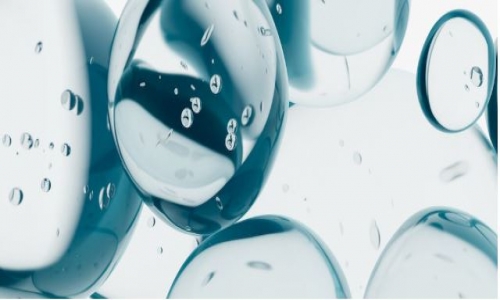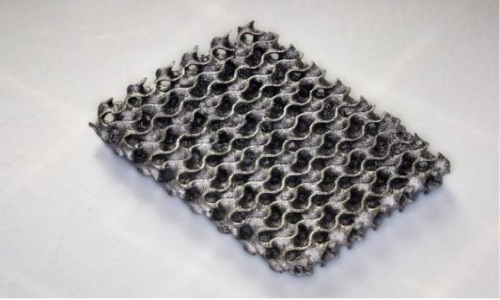


 10:26:4
10:26:4  2025-06-30
2025-06-30  880
880

Ditching toxic chemicals like cyanide and mercury, this green technique transforms trash into treasure while protecting the environment. With potential applications from mining to small-scale e-waste recycling, the innovation could revolutionize how we recover precious metals, making gold cleaner, safer, and surprisingly sustainable.
Greener Gold Extraction Breakthrough
A team of scientists from Flinders University in Australia has discovered a cleaner, safer way to extract gold from ore and electronic waste. By combining expertise in green chemistry, engineering, and physics, they’ve developed a method that could help reduce the toxic impact of traditional gold mining.
Published in Nature Sustainability, their breakthrough shows that high-purity gold can be recovered not only from mined materials, but also from old computer parts like circuit boards. The technique even works on tiny traces of gold found in scientific waste.
Led by Professor Justin Chalker, the team successfully tested their approach on electronic waste, mixed-metal scraps, and ore concentrates, demonstrating a powerful and more sustainable alternative to current extraction methods.
Fast Facts:
Electronic waste (e-waste) is one of the fastest-growing solid waste streams in the world. In 2022, an estimated 62 million tonnes of e-waste was produced globally. Only 22.3% was documented as formally collected and recycled.
E-waste is considered hazardous waste as it contains toxic materials and can produce toxic chemicals when recycled inappropriately. Many of these toxic materials are known or suspected to cause harm to human health, and several are included in the 10 chemicals of public health concern, including dioxins, lead and mercury. Inferior recycling of e-waste is a threat to public health and safety.
Miners use mercury, which binds to gold particles in ores, to create what are known as amalgams. These are then heated to evaporate the mercury, leaving behind gold but releasing toxic vapours. Studies indicate that up to 33% of artisanal miners suffer from moderate metallic mercury vapor intoxication.
Between 10 million and 20 million miners in more than 70 countries work in artisanal and small-scale gold mining, including up to 5 million women and children. These operations, which are often unregulated and unsafe, generate 37% of global mercury pollution (838 tonnes a year) – more than any other sector.
Most informal sites lack the funding and training needed to transition towards mercury-free mining. Despite accounting for 20% of the global gold supply and generating approximately US$30 billion annually, artisanal miners typically sell gold at around 70% of its global market value. Additionally, with many gold mines located in rural and remote areas, miners seeking loans are often restricted to predatory interest rates from illegal sources, pushing demand for mercury.
Water-Disinfectant Reagent & Light-Made Polymer
One of the key innovations is a recyclable gold-extracting solution made from a chemical commonly used to disinfect water.
“The study featured many innovations including a new and recyclable leaching reagent derived from a compound used to disinfect water,” says Professor of Chemistry Justin Chalker, who leads the Chalker Lab at Flinders University’s College of Science and Engineering.
“The team also developed an entirely new way to make the polymer sorbent, or the material that binds the gold after extraction into water, using light to initiate the key reaction.”
Extensive investigation into the mechanisms, scope and limitations of the methods are reported in the new study, and the team now plans to work with mining and e-waste recycling operations to trial the method on a larger scale.
“The aim is to provide effective gold recovery methods that support the many uses of gold, while lessening the impact on the environment and human health,” says Professor Chalker.
Low-Cost Salt Solution Dissolves Gold
The new process uses a low-cost and benign compound to extract the gold. This reagent (trichloroisocyanuric acid) is widely used in water sanitation and disinfection. When activated by salt water, the reagent can dissolve gold.
Next, the gold can be selectively bound to a novel sulfur-rich polymer developed by the Flinders team. The selectivity of the polymer allows gold recovery even in highly complex mixtures.
The gold can then be recovered by triggering the polymer to “un-make” itself and convert back to monomer. This allows the gold to be recovered and the polymer to be recycled and re-used.
Reality Of Islam |
|

Water may s

"It is

The process

Astronomers
 9:3:43
9:3:43
 2018-11-05
2018-11-05
10 benefits of Marriage in Islam
 7:5:22
7:5:22
 2019-04-08
2019-04-08
benefits of reciting surat yunus, hud &
 9:45:7
9:45:7
 2018-12-24
2018-12-24
advantages & disadvantages of divorce
 11:35:12
11:35:12
 2018-06-10
2018-06-10
 6:0:51
6:0:51
 2018-10-16
2018-10-16
 2:11:12
2:11:12
 2022-10-15
2022-10-15
a hero waters thirsty wild animals
 9:4:9
9:4:9
 2022-01-06
2022-01-06
 7:59:14
7:59:14
 2018-06-21
2018-06-21
 11:34:48
11:34:48
 2022-06-29
2022-06-29
 4:2:19
4:2:19
 2022-10-10
2022-10-10
 6:0:8
6:0:8
 2023-03-19
2023-03-19
 12:10:56
12:10:56
 2022-11-17
2022-11-17
 5:41:46
5:41:46
 2023-03-18
2023-03-18
| LATEST |